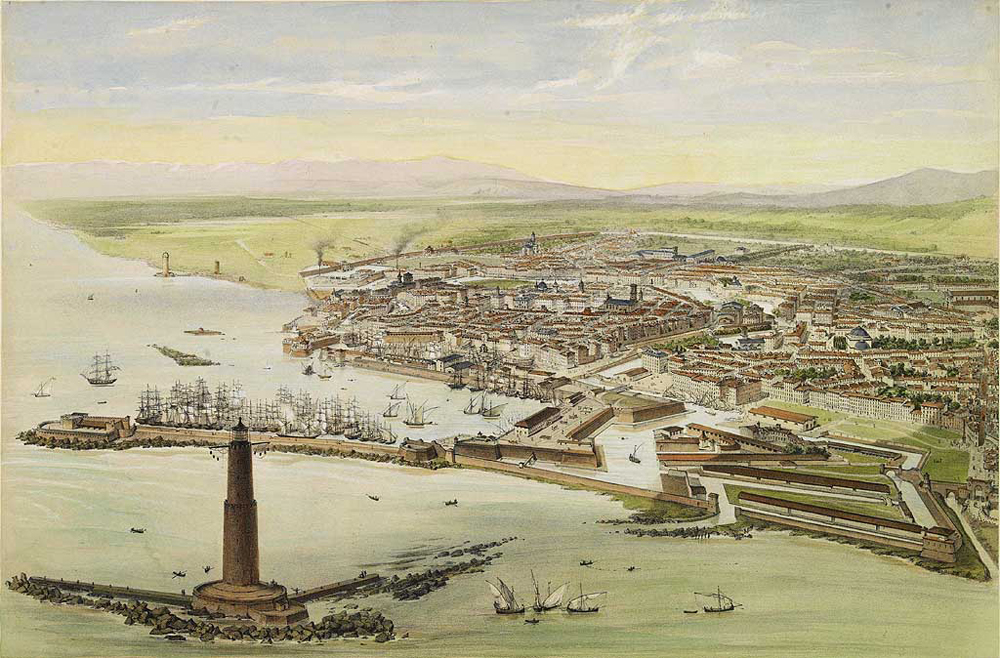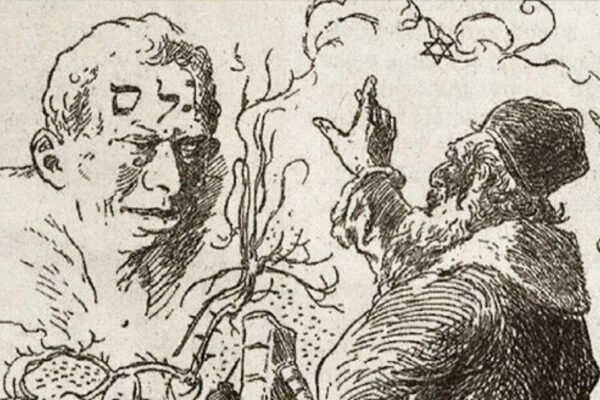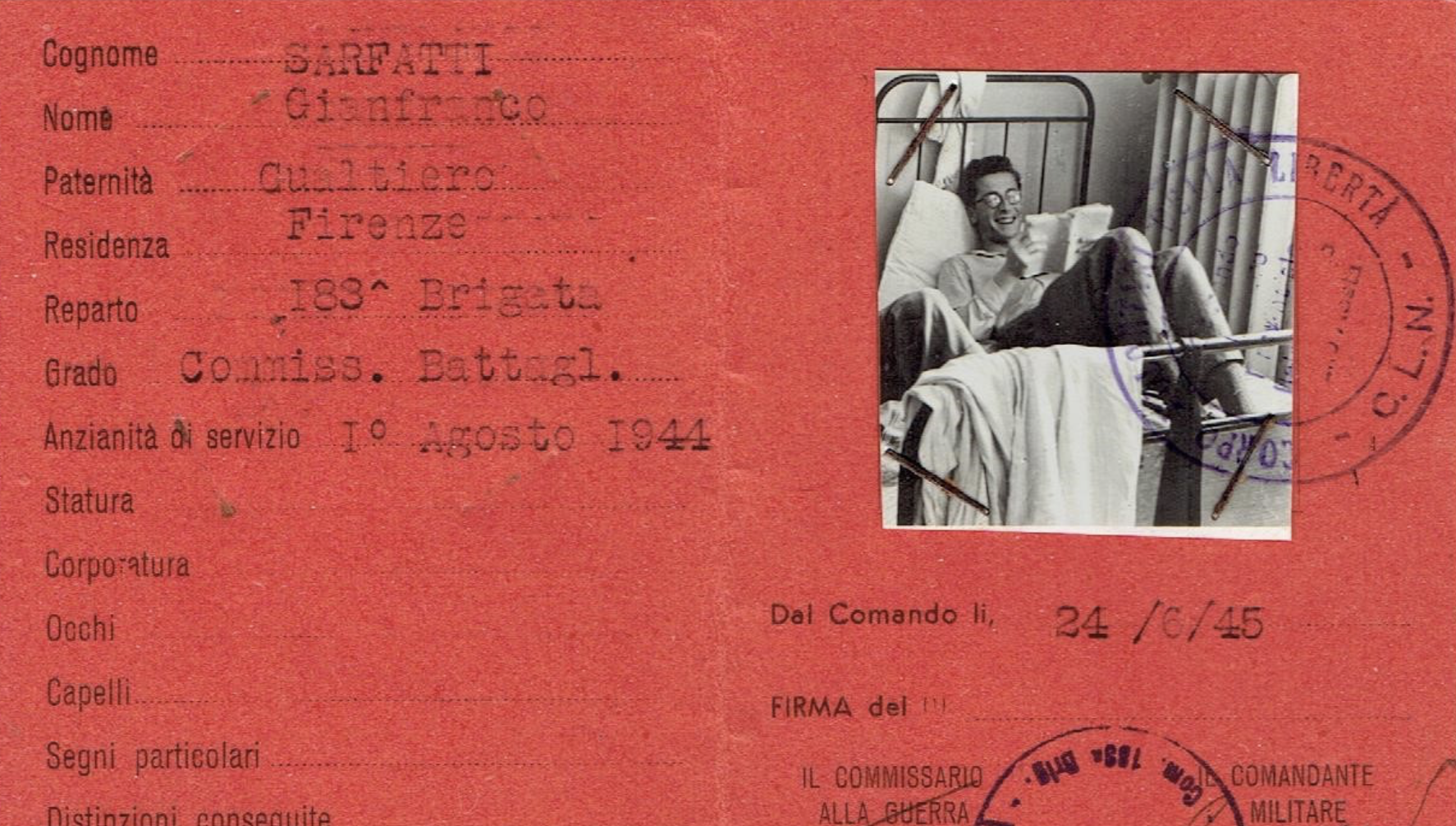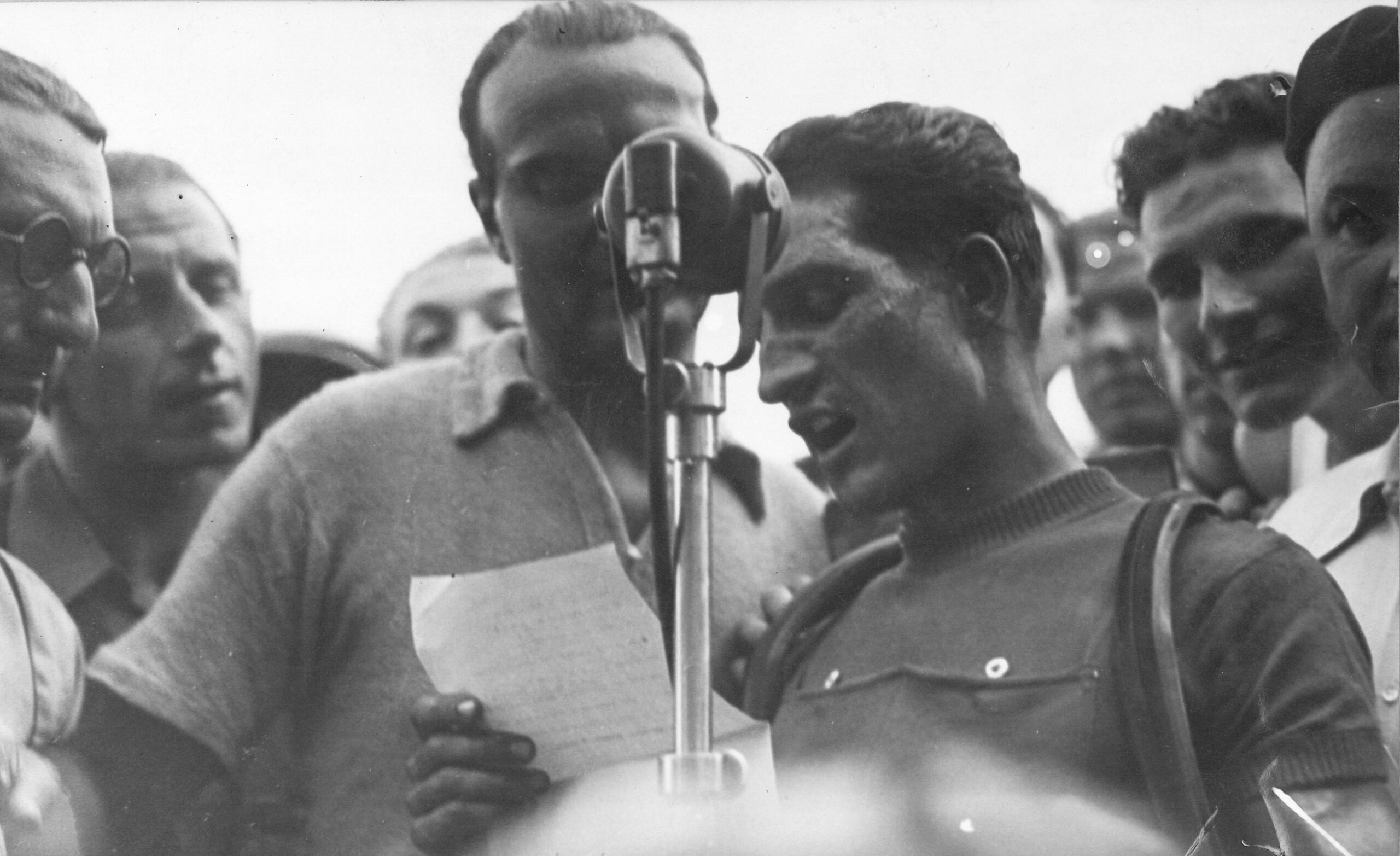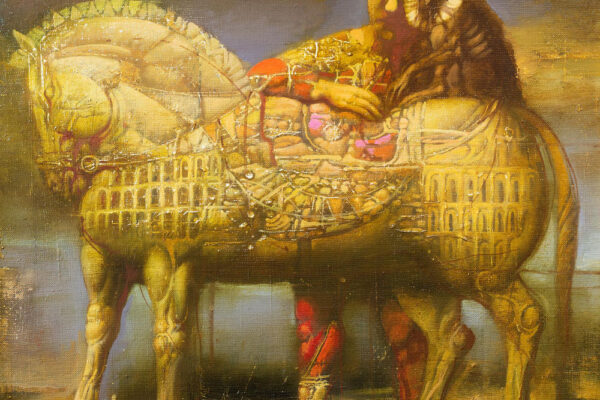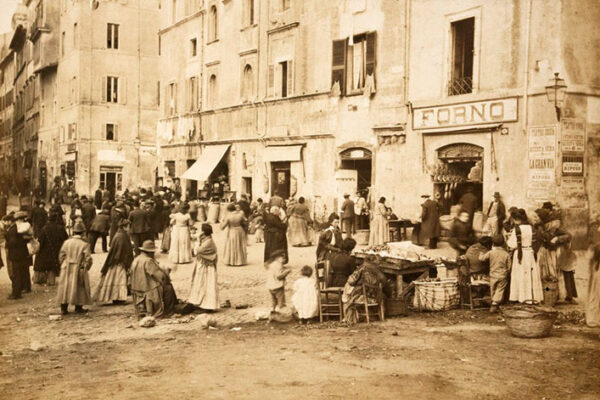Kabbalah in the Age of Reason: Elijah Benamozegh
This talk was presented at the symposium “Humanism and the Rabbinic Tradition in Italy and Beyond” organized by Centro Primo Levi and held in New York in 2005.
The Seminar series “Humanism and the Rabbinic Tradition in Italy”, held at the Centro Primo Levi in New York opened with two of its more recent proponents, the authors Elijah Benamozegh and Sabato Morais – both born, raised and educated in 19th century Livorno, that most unique of cities in the landscape of Italian Jewish communities. My friend and colleague Arthur Kiron dealt with Morais, of interest mainly for the bridge he tried to build between Italian Jewish culture – or more precisely Sephardic culture – and the United States. To Morais’s mind, the religious and the political were linked at the moral level – a feature common to American culture. Benamozegh, too, saw the close connection between politics and religion, a link full of potential for the mutual enrichment of both: like Morais, Benamozegh was at once an orthodox Jew and an Italian patriot, a very traditionalist rabbi as well as a liberal thinker who supported – at least in principle – the concept of the separation of Church – all Churches – and State. But he was also a kabbalist who believed in the truth of tradition and was an unconditional supporter of rational philosophy, making him an unlikely intellectual personality in the landscape of Jewish European modern culture.
Perhaps half-uncounsciously, I’ve introduced Benamozegh through three pairs of apparently unrealted – if not diametrically opposed – elements which correspond to the idea I have of this man of synthesis. But, before discussing his ideas, a few words on Elija Benamozegh’s life and work.
Elements in conflict come early in his biography – from the very beginning, in fact. He was born in 1823 in Livorno,Tuscany’s main port, at that time facing into a slow economic decline after the golden era of the eighteenth century when the city was a buzzing cosmopolitan center right at the heart of Mediterranean commercial traffic. The Jewish community, of Iberian origin, was one of the most active – if not the most active – player in the economic activity of the town. Besides the constant circulation of merchandise, human circulation was of great import in Livorno, a true cosmopolitan crossroads hosting – aside from Italians – substantial communities from Great Britain, Holland, and other European countries inlcuding Greece and France as well as many “Orientals” from Turkey and North Africa; and, of course Jews. The ethnic contrasts, reflected in modes of dress and multiplicity of languages were clearly striking to a visitor’s eye – to which the accounts of countless witnesses from far flung locales firmly attest. The big and beautiful synagogue did not upstage its supplicants – some attired in western clothes, others in turbans or white, oriental mantle. The German Jewish thinker Avraham Berliner, visiting in 1874, described worship in the Great Synagogue:
The various forms of dress afforded an interesting spectacle to the observer. There were European Jews in overcoats, Berbers in their bright white burnous, Orientals in turbans and many others besides. They had all come together to pray in our sacred tongue with all the usual devotion. Yet their lively and changeable character was clearly perceptible: conversations would frequently break out in somewhat raised voices, accompanied by extravagent gesturing.
By the end of the 18th century and increasingly over the next decades, Iberian Sephardic Jews were no longer the only ethnic component: they were joined by Jews of Italian origin (mainly from Rome) and from the Maghreb.
The birth of Elijah Benamozegh was also very “Oriental” – even biblical. His father Abraham’s wife bore him no sons; and at the age of seventy he decided to marry a second wife, Clara Coriat – having sought permission from a rabbi from the Land of Israel; and pleading in his prayers for a son. His prayers were evidently effective – in 1823 Elijah was born. Many biblical elements combine in this story: the sterility of his first wife, his subsequent bigamy, and a birth after prayer. All of this took place in Livorno, one of the most dynamic centers of 19th century Italy: Elijah Benamozegh was born on a kind of Oriental island in the middle of a Western world.
As is so often the case, old fathers make young orphans: Elijah was brought up by his mother Clara and educated by his mother’s brother – the important Moroccan kabbalist Yehudah Coriat. Beside Bible, traditional commentaries and Talmud, Coriat read with his young nephew the Zohar, the main kabbalistic text. In his short Autobiography, Benamozegh proffers a moving depiction of “long winter nights when [my] uncle would read the Zohar with me, from start to finish – and sometimes twice together, by the dim light of a candle”
It’s worth noting that the study of this extremely difficult text was no longer on the curricula of Italian Jews. It should also be noted that in modern, western Livorno, Benamozegh received an “Oriental” Jewish training.
Later, when he was working in a warehouse, Benamozegh hid behind the bales of cotton to read Spinoza, or concealed a book of Vincenzo Gioberti under the counter. Many years later, he would write:
I felt as though I were under house-arrest. How many times I laid aside the ledgers to take up instead my Torah and science books. I am grateful in memory towards my master, who often entered unannounced, catching me in the very act of hiding my books. But never once did he reproach me: on the contrary, he took the opportunity to converse with me on these subjects.
It should be remembered that the “heretic” Spinoza was certainly not in good odour among religious Jews; as for Gioberti, he was the main Italian Catholic thinker of the time. The Zohar, Spinoza and Gioberti: an interesting combination. Very soon, another Italian philosopher joined the authors shaping Benamozegh: Giambattista Vico, chiefly remembered for his linguistic doctrine.
There isn’t a lot to say about the rest of Benamozegh’s biography: he never left Livorno where he was appointed preacher, became a member of the rabbinical court and a professor at the rabbinical seminary. But it can truly be said of him, as the contemporary French scholar Charles Mopsik wrote on the kabbalist Moses Cordovero:“There are men whose biography is made of very few dates, and whose bibliography covers libraries”.
He was a singular character, if even some of the numerous anecdotes recounting his exploits can be bleieved. Let me quote just one: Benamozegh was giving a Talmud lesson in his house; while teaching, he was cooking. Someone knocked at the door: it was a man dressed in a formal, elegant style, who introduced himself as Ernest Renan. The Frenchman Renan was the most important theological historian of his day and certainly among the most prominent and influential scholars of the century. “I would like to meet Professor Benamozegh”, he said. “Just a moment”, said the little man, who came back after taking off his apron; “I am Professor Benamozegh, nice to meet you”.
His bibliography is rich and multi-faceted. His first text, published when he was just nineteen, was a Hebrew and Aramaic introduction to a kabbalistic book written by his uncle Yehudah Coriat. In this short volume, Benamozegh declares the honour he feels to be the offspring of a long chain of learned men from Morocco.
But his first truly impressive work was Emath Mafgia‘ (The Fear of the Small Animal, 1855), a defense of the Qabbalah, in which Benamozegh criticised the anti- kabbalistic conclusions of Italian rabbi Yehudah Ariyeh Modena in Ary Nohem (The Roaring Lion), a book that, although written in the 17th century, had only recently been published. In his critique, Benamozegh revealed his strong hermeneutical insight: Qabbalah, he wrote, can only be truly understood by people with a special flair for it, just like mathematics or art. Modena’s rationalistic remarks against Qabbalah – Benamozegh believed – were the product of a mind lacking the necessary sympathy towards its subject.
Benamozegh’s more prolific years were the 1860s when he wrote important books and articles on a variety of subjects in Hebrew, Italian and French,. In this more mature period, Benamozegh mastered not only rabbinical sources but also European philosophy and history of religions.
From 1862 to 1865, Benamozegh published Em laMiqra (Matrix of the Reading), a commentary of the Torah in which comparative linguistics, theological history, archeology and other modern disciplines took their place alongside Qabbalah, forming a new kind of harmonious link between science and tradition. His observations and thesis, although extremely rich and very interesting, had considerable difficulty finding an appropriate audience since it was neither completely scientific nor entirely traditional. Em laMiqra was condemned by the rabbis of Jerusalem and burned by the rabbis of Aleppo, who found in it some heretical aspects; and as for the European readers, this ambitious exposition met with only very moderate success.
Ta‘am leShad, in 1863, was another defense of Qabbalah, this time against the powerful attack of Shemuel David Luzzatto, the greatest Italian Jewish scholar of the century; who embraced a modern theory concerning the origins of the Zohar that focused more on the possible antiquity of its ideas than on the narrow debate about its actual writing. A year later, in the essay Spinoza et la Kabbale, Benamozegh took part in the debate on the philosophical sources of Spinoza; in this essay– as he would admit years later – he wanted to show the debt owed by German idealism – the main European philosophy of the time – to the ancient Jewish doctrine, via the mediation of Spinoza.
In the same year, 1864, Benamozegh published a series of articles, first in Hebrew –
and later in a French version – on the notion of tradition in Judaism. In these texts – republished three years ago in Israel – Benamozegh renews the whole concept of tradition, using a cultural project based on strict Jewish orthodoxy. The influence of romantic notions of popular culture is clear: tradition – in this case, the oral tradition – acquires superior status to that of any written text, being the primary source and carrier of what follows.
Storia degli Esseni, published in 1865, was a study of the Jewish ascetic sect. Benamozegh’s only sources were the writings of Philo and of Josephus Flavius, but his conclusions were astonishingly modern, preceding in a sense the discoveries of the Qumran rolls. Morale Juive et Morale Chrétienne (1867), is one of the most brilliant and best known books by Benamozegh. Here Judaism is seen not only as a religion but also as a national culture, since it includes notions of “nation” and “politics”; whereas Christianity – a universal and ascetic religion that denies these notions – is obliged by reality to accept them, resulting in a dangerous overlap of religion and politics – of Church and State – in one word Inquisition, and the absurd control of consciousnesses.
Ten years later, in 1877, Benamozegh published the first texts of his course in Theology, in Italian, Teologia Dogmatica e Apologetica. Dio. An astonishing array of Jewish and non-Jewish sources are studied in this volume, that together create a theological vision of Judaism that belongs at once to kabbalistic tradition and to Jewish philosophical tradition; its closeness to the Catholic ideas of Vincenzo Gioberti is evident and even acknowledged. Some scholars see in it a continuity with the tenets of an Italian traditional philosophy dating back to Giambattista Vico. So, in a way, Benamozegh can be seen as a Jewish version of an Italian philosophical style.
As we know, Benamozegh wrote in three languages; a choice by no means inadvertent but, in fact, tailored deliberately for different genres as well as audiences. Thus, biblical commentaries and the defense of Qabbalah were made in Hebrew, philosophical treatises were mainly in Italian, and texts with less technical features (like Israël et l’Humanité) were written in French – the intellectual lingua franca of the day. It’s interesting to note too that the different languages also corresponded to authorial tones. Take for instance the attitude toward Christianity; it is extremely respectful in Morale Juive et Morale Chrétienne and in Israël et l’Humanité, where the emphasis is put on universalism. But when he writes in Hebrew, in Em laMiqra for instance, his tone – and judgement – is much more severe: Christianity, he says, is only a bad imitation of Judaism.
So who was the “true” Benamozegh? The Hebrew one, who insisted on the superiority of Judaism over all other religions and cultures, or the French (and Italian) one, who asserted pluralism, in a vision that admitted different contributions to the universal civilization? I believe both were sincere.
And it was these – apparently conflicting beliefs – that account for the myriad interpretations of his work Benamozegh was seen as the thinker who was able to find a meeting point between universalism and Jewish fidelity: this is the common interpretation in France – and one shared by the American scholar Richard Cohen. But he has also been regarded as the Rabbi who used the secular sciences merely as a means to strenghten the position of Jewish orthodoxy: this is the reading of the Israeli rabbi Eliyahu Zini. On the other hand, José Faur sees in Benamozegh a typical representative of Sephardic culture, orthodox, but open to the sciences and humanities; others – like the Italian scholar Elémire Zolla – consider him the heir to the authentic Italian philosophical tradition, whereas Moshe Idel emphasizes the continuity with the Italian kabbalists of the Renaissance.
At the core of all this exclusiveness and universalism, tradition and progress, rationalism and religion, is Qabbalah. Qabbalah as the true dogmatic Jewish tradition.
Benamozegh’s avowed, and ambitious intent was to reconstruct a comprehensive Jewish philosophical system which – according to him would “re-establish the broken link with the most advanced human sciences”. The task, he wrote, seemed so hard that he would have been happy to draft just the beginning – Maimonides himself having been unequal to the undertaking. This ambitious parallel was pushed to the point of stating a series of credos, following the example of the Spanish philosopher’s articles of faith.
In truth, the result was a philosophical system similar to that of the Catholic thinker Vincenzo Gioberti. The Italian rabbi’s theology seems to fit entirely into a particular European cultural setting, while his conceptual sources – including some of his definitions – are almost always identifiably from kabbalistic texts.
Was Benamozegh a kabbalist? Yes he was, and an authentic one – in the technical sense – because he received the secret doctrine from the mouth of another kabbalist (Yehudah Coriat). Qabbalah is at the core of his works and his thought.
But Benamozegh developed it in three directions, different – at least in part – from those of his predecessors:
1) he was an apologist, against the detractors of Qabbalah (Modena in Ary Nohem (1855) and Samuel David Luzzatto in Dialogues sur la Kabbale, 1852) that is to say, against some of the major representatives of the rationalistic stream within Italian Judaism;
2) he believed Qabbalah could no longer remain a secret, esoteric doctrine. The time had come for it to be published, read and known by all – and no longer reserved for an élite of the initiated. Moshe Hayyim Luzzatto (1707-1746) before him and Yehuda Ashlag (1885-1955) had had the same idea. Benamozegh even felt that progress (a central tenet of his philosophy) lay in the diffusion of Qabbalah;
3) he did not develop a true kabbalistic philosophy but formulated philosophical and theological theory nourished by Qabbalah. Benamozegh developed a tendency – typically Italian – to study Qabbalah with a philosophical spirit. Yosef Ergas (1688-1730) and Moshe Hayyim Luzzatto – the greatest Italian kabbalists of the 18th century – already felt the need to write dialogues between a kabbalist and a rational thinker, suggesting that Qabbalah should, or at least could, be understood through the method and concepts of philosophy. Luzzatto limited himself to the method, emphasizing the “cartesian” imperative of clarity and “esprit de système”; Ergas formulated a sort of kabbalistic theology, in which the influence of Maimonides is evident. Both were studied, read and admired – until recent years mainly, if not exclusively, by Jews of Eastern Europe, Hassidim and Mitnaggedim. In Italy, in the years after Luzzato and Ergas, Qabbalah fell into a kind of disrepute, culminating in the total condemnation pronounced by Samuel David Luzzatto. One hundred years later, in a European culture dominated by idealistic philosophy and later by positivism – and with religion dramatically losing ground among Christian as well as Jews – the Qabbalah of Benamozegh had to draw on sources other than the Italian Jewish tradition, as well as cope with other intellectual attitudes. It was – as the title of my lecture says – Qabbalah in the age of Reason.
The Qabbalah of Benamozegh was not rooted in Jewish Italian culture but was “imported” from Morocco. What he did was a kind of translation, at once linguistic and cultural, of this Qabbalah into the lexicon of Western philosophy. Perhaps the social circumstances in which Benamozegh lived accounts for it: he lived in an increasingly secularized Italy within a culture where the sciences became predominant; and he himself believed firmly in progress and in science. As a rabbi – and especially as a kabbalist – he was undoubtedly isolated, and tried to break out of his isolation and escape his loneliness. On the one hand, he could not write as an Italian kabbalist of the previous century; while on the other, his Hebrew-speaking audience did not share his western, philosophical training.
Benamozegh was a man who transplanted an Oriental doctrine and sensibility to the Western world; a true Oriental in the age of orientalism – “We need the Orient, to be oriented”, he wrote – but one well aware of the backwardness of Jewish culture both in the Arab world and in Eastern Europe: a fact that only served to fuel his awareness of the need to advise his brethren from those countries as they made their difficult transition to modernity.
This twofold culture where no one element prevails helps explain the difficulties attached to his synthesis, as well as the problematic reception of his work. He was a man more admired than studied in Italy, read with interest in France – up to now, at least – for only one aspect of his work: the “universalistic” and moral vision of Judaism; and almost ignored elsewhere – except by those Jewish communities of North Africa influenced by Italian and French culture. There, he was read as an expert on the synthesis of tradition and modernity. Arthur Kiron can expand further on the American reception of Benamozegh – mainly the mediation of Morais – and the translation of Jewish and Christian Ethics (there is also a recent translation of Israel and Humanity);
Benamozegh described himself – in an apology directed to the rabbis of Jerusalem – with irony, and in wonderful Hebrew as a man whom nobody was ready to accept:
Alas, gentlemen! I will tell you what this situation resembles: an old man who had two wives, one young and one old, who hated each other like Hannah and Peninah.[i] With the passage of time his hair began to whiten; the young wife pulled out his gray hairs, and the old wife pulled out the dark ones, each so that he would be more like herself. And he, poor man, ended up bald.[ii]
It is the same for me: science and faith are closely connected. They proceed together, but there are many people who see my fear of God as imbecility, or see my science as mere vanity, and my books as stinking carrion – with my petty self among them, neither impious nor a scholar, belonging half to the devil, and half to the good Lord.[iii]
To one man, I am a pious fool, to the next a heretic; I am called a scholar, but not a sage, and sometimes a plain herdsman and a dresser of sycamore-trees.[iv] Here they don’t believe Europe suits me, and advise me to go to Jerusalem and Mount Zion, but there they refuse to let me enter the sanctuary, and send me back outside among the scholars of the nations.
And I, for my part, remain as though hanging in the air – neither rebel nor recognized writer, heretic nor believer, infidel nor Kabbalist, philosopher nor rabbi, blasphemer nor orator. I am neither assimilated nor awaiting the Messiah, neither Shammai nor Hillel, neither day nor night.
Some passages, taken from Benamozegh’s books, illustrate perfectly his dual culture. The first is a quotation from a brilliant essay, Spinoza et la Kabbale, in which Benamozegh wanted to show the kabbalistic sources of the philosophy of Spinoza.
Kabbalah sang its dogmas, while Spinoza demonstrated them. The former is a powerful harmony, a continuous hymn, while the latter produced but a web of definitions, axioms and corollaries. Kabbalah revealed thoughts just like poets do, with their freedom, élan and boldness. Spinoza expounded them like a geometrician.
This is not merely “esprit de finesse” vis-à-vis “esprit de géometrie”. Here we have a thirst for a different philosophical style, which is simultaneously romantic and inspired by his Jewish/Oriental culture; reflected in his Hebrew but also in his Italian prose.
In another passage, in History of the Essenes, Benamozegh shows another aspect of his intellectual personality, this time more “Western” – despite its immediate appearance:
How different current times are! Persecutions, segregations and tyrannies caused great ills, and certainly more to souls than to bodies. In the Ghettoes, Religion endured only at great cost – at the cost of becoming undernourished, withered, powerless, ungenerous, and at the cost of losing its noble, grand, poetic and sentimental character. True, the walls of the Ghettoes fell.
People quickly moved out of them, but they left there the most precious gemstone, religion. Religion is always in a Ghetto, always amidst torments and darkness, in the quagmire of those filthy alleys. Jews subject to Islam are less unhappy! They may explain their religious practices without fear of being reproached, in broad daylight; they truly can show what Jewish faith is, what it is able to do.
The kabbalist Pharisee who climbs a mountain to greet the holy day is a marvelous thing for those who understand it – those who did not forget the meaning of our institutions. It is greater than Byron, who leaves himself at the mercy of the raging sea on a light boat to be able to watch uncontrolled nature, and perhaps perish at its hands, with the wish to taste death to be able to describe it.
It is greater than Jacopo, Foscolo’s brainchild, who seeks the strongest emotions amidst cliffs and precipices. Why do I say it is greater? Poets look for the sources of Beauty in nature and nature’s great sceneries. The poet-theologians of Judaism, however, bring Beauty to nature and disseminate it, because they do not seek in nature, yet bring to it, great ideas and great effects; and because God, the creator of nature, who is the highest source of the beautiful and the sublime, is alive in their hearts. Hence, they stand up as better judges than spectators of created Beauty. In one word, poets perceive God’s ray of light as reflected by nature, while the poet-theologians of Judaism disseminate through nature the divine ray of light as reflected by their own soul. Nature makes poets divine – isn’t that true? Yet the poet-theologians of Judaism make nature divine.
There are several elements in play here: firstly, the call for a new Jewish culture and religion – “in broad daylight”. It’s interesting to note that this Italian kabbalist preceded the Jewish/Hebrew writers of Eastern Europe, like Bialik, with his romantic taste for nature. The quotations of the Italian pre-romantic author Ugo Foscolo (the author of the Lettere di Jacopo Ortis) and the nods – “the poet-theologians” – to the Italian philosopher Giambattista Vico are also remarkable.
But one should also note that the Jewish religious thinker does not accept the pantheistic implications of a romantic vision of Nature. Nature is divine because man makes it so, in other words man stands at the center of the world; and his relationship to Nature is mediated by God – i.e. by the divine idea in him. In this case, the “Oriental” thinker is very “Western” in spite of the reference to Islamic countries, because he has no attitude of mystical self abandonment but rather an anthropocentric one; and because he imposes a strong principle on Nature – the divine one. In other words, man is the master of Nature – an absolutely Western concept.
There is another aspect of Benamozegh’s theory I would like to address. Perhaps, rather than “theory”, we can call it religiosity or religious feeling – that feeling which precedes and grounds philosophical expansion. I think it’s important to grasp the force of that burning attitude, that we might define phenomenological, in order to understand what Jewish religiosity meant in the Italy in the 19th century; and by so doing , we might contribute to the history of religion – and Judaism which, it need hardly be said, is not only a culture but also, if not above all a religion.
I started investigating that topic in relation to earlier Italian Jewish authors, like the poets Sara Copio Sullam in the 17th century and Salomone Fiorentino in the 18th. Their attitude emerges when they write in Italian, forcing them to express themselves in terms comprehensible to a Christian audience – and excluding in the process all the uniquely Jewish features (like the Torah,for example). In short, these authors have the sense of a God absolutely transcendent, whose paths are impenetrable; yet at the same time they don’t feel overwhelmed by this Divinity – on the contrary, they are optimistic regarding Man, his efforts and his achievements. I think Benamozegh shares the same attitude: the ultimate sense of mystery concerning God, while at the same time a deep trust of those human skills, that he identifies in human reason.
Let me quote some passages from Benamozegh’s Teologia. Some of them – nothwistanding their “technical/dialectic” style – are, I think, quite eloquent as regards his religious attitude:
This human powerlessness is the greatest demonstration of the existence of the Infinite. It consists of an indistinct perception of a limit, a mystery, a shadowiness, which can only be either the Infinite, or Nothingness. It can be proven that it is not Nothingness: first, from this very perception of powerlessness, since nothingness is mere negation and thereforesubject to demonstration [while the Infinite cannot be demonstrated]; second, from perceiving one’s mind as a finite entity – a perception equivalent to an inkling or an intuition of the Infinite. The mind, in apprehending its own finite nature, finds itself, so to speak, on the threshold of the Infinite, leaning forward towards it. If there were nothing beyond finite reality, the human mind would be sated and replete with itself. On the contrary, the mind feels lacking and thirsty. Therefore, the Infinite exists.
Like a man who might attempt to contemplate the Sun through a pure wave, so we endeavor to find God in the mirror of our consciousness. We will not say, as that giant Hegel did, talking to his disciples: “We will create God in the next lesson”. By saying this, he lowered himself to the level of a fetishist. David swore against that ahead of time writing כמוהם יהיו עושיהם. [They that make them are like unto them, Ps. 115:8]We will rather do like Moses, who in the fleeting moment when God passed by him quickly bowed his head – and adored Him.
This later excerpt, a synthesis of Benamozegh’s entire orientation, is taken from Il mio credo (“My Creed”, in Hebrew Any maamin), a fascinating shorter text where the Italian kabbalist and philosopher sums up in a few pages his religious ideas. His total dependence not on Faith or Authority (the authority of revelation – mediated by the rabbis), but on Reason, is made very clear. And this is quite rare for a kabbalist – even for a kabbalist who wrote in the age of Reason.
I believe that, as Dante says, “Doubt springs up from the feet of Truth”, which “[to the top] from height to height impels us”. In other words, a rational, pure, perennial faith has no place in this world. I believe equally that there cannot be either negation or doubt if not shaken by the doubt of doubt and negation. The difference between a believer and an unbeliever consists of a greater or lesser prevalence of reasons to believe over reasons not to.
This prevalence, together with the agreement on rational truths (both of which are always more or less far from people’s common attitude), can only be acquired when one silences not only passions, but also Maya, that is the anti-scientific delusion of sensations, and that cumbersome mass of common sense prejudices that burdens us, heavier than atmospheric pressure, unbeknownst to us. It requires a calm impartiality, and a logical imperturbability like that of a creature with all its wits about it, fallen on earth all of a sudden from Venus, Mars or Mercury – or better still from another system altogether different from ours.
Religion, like philosophy, requires dialectical rigor, a certain practice of abstraction, perfect impartiality, and the ability to reason to its utmost consequences, sans peur et sans reproche. Religion, like Science, has little to do with what is called common sense: that is one of the reasons why dealing with the latter fosters the former. Finally, blind faith is no other than faithful blindness; it is very true what Rabbi Bahye said eight centuries ago, that only a Prophet or a philosopher can be a true believer. This does not mean, however, that there is no room for emotions in the religious sphere, yet they should be subordinate and secondary. Emotions should catch light only after having been enlightened by reason. It is light that has to turn into warmth.
Notes
[i] I Samuel, I, 2 [ii] Cf. Talmud Bavli, tractate Baba Kama 60b. [iii] Cf. ibid., tractate Sanhedrin 39a, and Rashi’s in loco commentary on the words hormiz and ahormiz. [iv] Amos, VII, 14.


